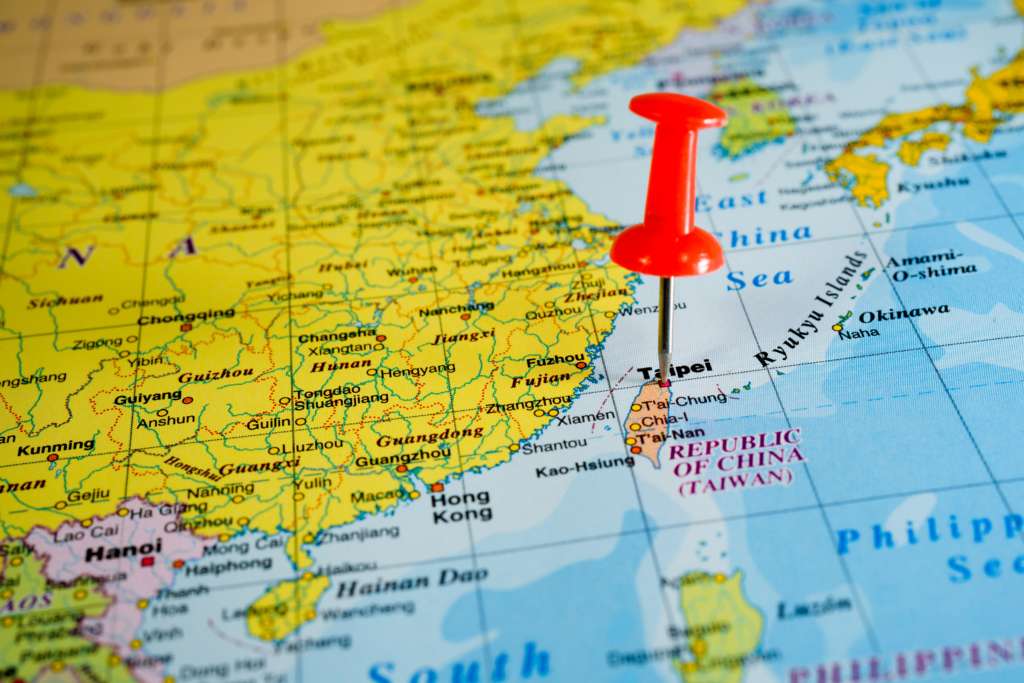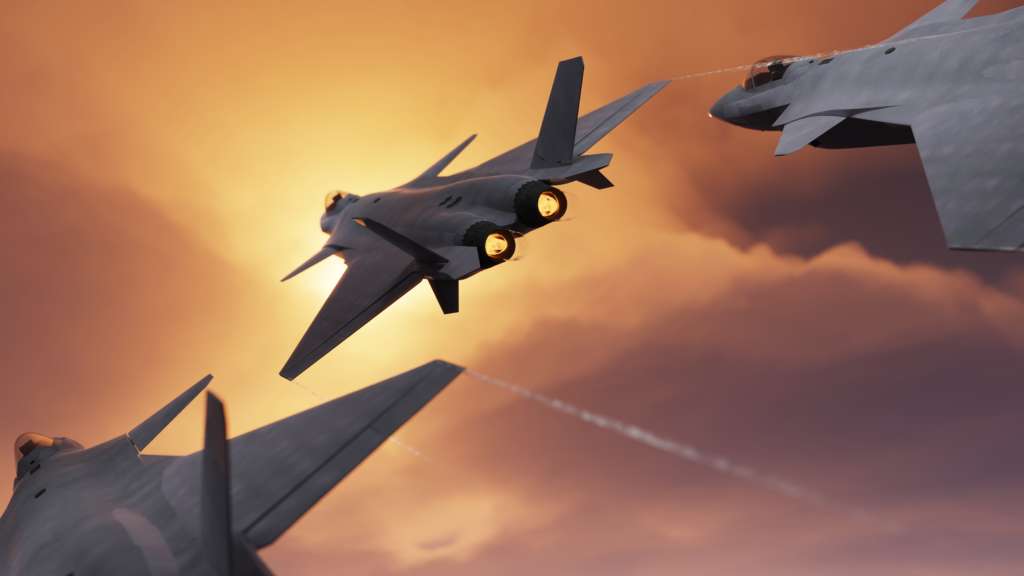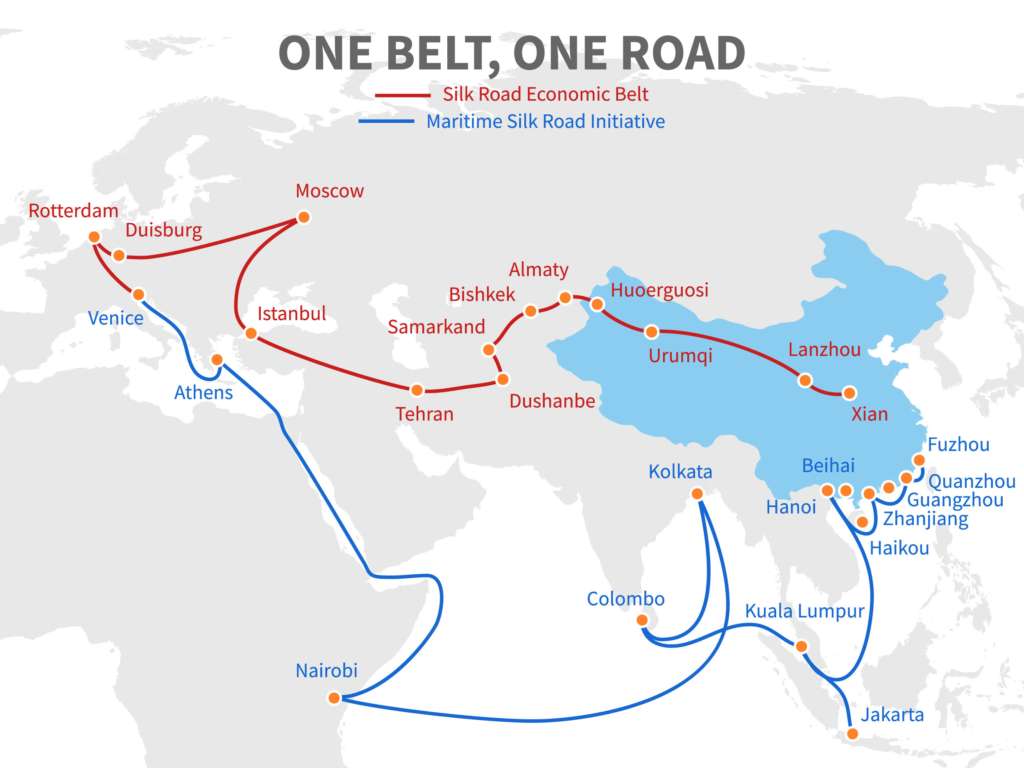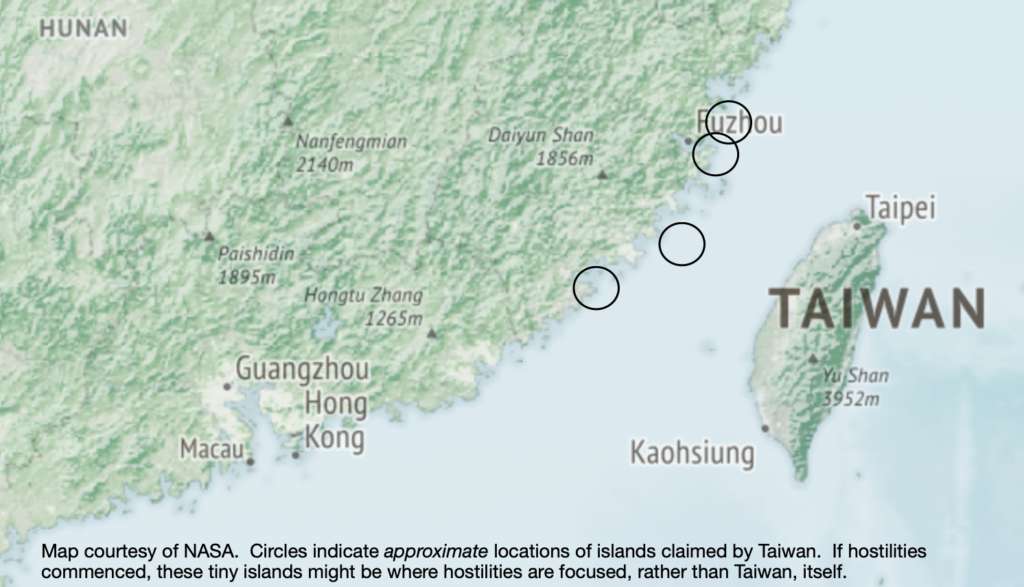EDITORIAL: 10/3/2021. Taiwan says “a total of 39 Chinese military jets flew into its air defence zone on Saturday – the largest incursion by Beijing to date” according to the BBC. The country says the fighters came in two waves, only a day after more than three dozen other planes (including nuclear-capable bombers) also committed the same provocation. However, as the BCC points out, Taiwan’s Air Defence Zone is outside of its territorial and national airspace, so technically there was no violation to Taiwan’s sovereignty. Yet, an important question is whether Taiwan technically and legally possesses any sovereignty in the first place.

The actors
Taiwan is about half the size of Scotland and almost the same size as the state of Maryland. With 23.9 million people, it has roughly the same population as Australia has. The island of Taiwan is separated from mainland China by a strait that is 110 miles wide.
China, called the People’s Republic of China (PRC) refuses to have full diplomatic relations with any country that maintains diplomatic relations with Taiwan, formally called the Republic of China (ROC) Only fifteen countries in the world recognize the national sovereignty of the ROC. These are mostly Central and South American countries, plus some islands in Oceania.
Contradictions
The U.S. maintains five contradictory “core principles” concerning PRC/ROC relations. These are:
- The United States remains committed to our one China policy based on the three Joint Communiqués and the Taiwan Relations Act;
- The U.S. does not support independence for Taiwan or unilateral moves that would change the status quo as we define it;
- For Beijing, this means no use of force or threat to use force against Taiwan. For Taipei, it means exercising prudence in managing all aspects of cross-Strait relations. For both sides, it means no statements or actions that would unilaterally alter Taiwan’s status;
- The U.S. will continue the sale of appropriate defensive military equipment to Taiwan in accordance with the Taiwan Relations Act; and
- Viewing any use of force against Taiwan with grave concern, we will maintain the capacity of the United States to resist any resort to force or other forms of coercion against Taiwan.
In January 2017, former National Security Council staffer Dr. Michael J. Green (mgreen@csis.org), Senior Vice President for Asia and Japan Chair at the Center for Strategic and International Studies (CSIS) and director of Asian Studies at the Edmund A. Walsh School of Foreign Service at Georgetown University wrote:
“When the United States moved to recognize the People’s Republic of China (PRC) and de-recognize the Republic of China (ROC) in 1979, the United States stated that the government of the People’s Republic of China was “the sole legal Government of China.” Sole, meaning the PRC was and is the only China, with no consideration of the ROC as a separate sovereign entity.
“The United States did not, however, give in to Chinese demands that it recognize Chinese sovereignty over Taiwan (which is the name preferred by the United States since it opted to de-recognize the ROC). Instead, Washington acknowledged the Chinese position that Taiwan was part of China. For geopolitical reasons, both the United States and the PRC were willing to go forward with diplomatic recognition despite their differences on this matter. When China attempted to change the Chinese text from the original acknowledge to recognize, Deputy Secretary of State Warren Christopher told a Senate hearing questioner, “[W]e regard the English text as being the binding text. We regard the word ‘acknowledge’ as being the word that is determinative for the U.S.” In the August 17, 1982, U.S.-China Communique, the United States went one step further, stating that it had no intention of pursuing a policy of “two Chinas” or “one China, one Taiwan.”
“To this day, the U.S. “one China” position stands: the United States recognizes the PRC as the sole legal government of China but only acknowledges the Chinese position that Taiwan is part of China. Thus, the United States maintains formal relations with the PRC and has unofficial relations with Taiwan. The “one China” policy has subsequently been reaffirmed by every new incoming U.S. administration. The existence of this understanding has enabled the preservation of stability in the Taiwan Strait, allowing both Taiwan and mainland China to pursue their extraordinary political and socioeconomic transitions in relative peace.”
Ibid.

If POTUS were to accept PRC sovereignty over Taiwan in a conflict, he would be called out by hisown countrymen for betraying a loyal ally. If the PRC decided to exercise their sovereignty over the island using force in response to some real or perceived provocation, any action by the U.S. on behalf of Taiwan would be interpreted as interfering in the internal affairs of a nation. Talk about a rock and a hard place.
The dilemma
You can see the tightrope the U.S. is walking. On the one hand, “the United States doesn’t agree with Beijing’s claim to sovereignty over Taiwan,” while on the other hand, “nor does it agree with Taipei that the ROC is an independent, sovereign state” (ibid.) So, we “acknowledge” the PRC position that Taiwan is part of China and we recognize the government in Beijing as the sole government of China. Yet we have laws that require us to come to Taiwan’s aid if the PRC actually attempts to impose its sovereignty over the island.
“The United States is very concerned by the People’s Republic of China’s provocative military activity near Taiwan, which is destabilizing, risks miscalculations, and undermines regional peace and stability. We urge Bejing to cease its military, diplomatic, and economic pressure and coercion against Taiwan.”
u.s. State department spokesman ned price
Could war break out between the PRC and ROC or the PRC and USA?
The short answer is “Yes.” As reported by the Council on Foreign Relations, “the U.S. Department of Defense said in a 2020 report [PDF] that China’s military, the People’s Liberation Army (PLA), is ‘likely preparing for a contingency to unify Taiwan with the mainland by force’” at the moment. Equally likely is the probability that the U.S. has contingency plans to respond to PRC aggression directed at ROC. While the PRC has not renounced the use of force in order to reclaim Taiwan, it has in the past stated that it would not use force unless that was the only way to achieve national reconciliation over Taiwan.
The reliable and generally unbiased news source The Hill reported on October 4th: “The United States is very concerned by the People’s Republic of China’s provocative military activity near Taiwan, which is destabilizing, risks miscalculations, and undermines regional peace and stability. We urge Beijing to cease its military, diplomatic, and economic pressure and coercion against Taiwan” according to State Department spokesman Ned Price. This statement was released the day before (Sunday.)
Fishing in troubled waters

The PRC incursions this year began soon after the inauguration of President Biden last January. The chaotic U.S. withdrawal from Afghanistan, along with questions among some members of Congress about the President’s ability to grapple with complicated issues, and choose a workable solution which might involve U.S. involvement in hostilities in another part of the world, may have attracted the attention of the leadership in Beijing. Beijing’s influence in the world is on the rise either for good or for ill. The activities within the illegal “nine-dash-line” are providing imperialistic capabilities to a communist country, an oxymoron of sorts, but entirely possible. Also problematic for the U.S. is the PRC’s “Belt and Road Initiative,” which can only enhance it’s influence in Asia and elsewhere as well.
Relations are headed south
Sino-American relations soured under the previous administration as President Trump blamed the Chinese for everything from a loss of American competitiveness in Asia and elsewhere to the Coronavirus outbreak. It does seem to be true that the PRC has disregarded copyright and/or patent laws which can undermine another country, and China seems to be actively and surreptitiously seeking trade secrets and research improvements in the area of American agriculture. The PRC is also thought to have committed cyber crimes against the U.S. through their People’s Liberation Army Unit 61398.
Thucydides Trap
“The Thucydides Trap, is a term popularized by American political scientist Graham Allison to describe an apparent tendency towards war when an emerging power [i.e., China] threatens to displace an existing great power [i.e., the U.S.] as a regional or international hegemon. It was coined and is primarily used to describe a potential conflict between the United States and the People’s Republic of China.”
Thucydides, considered by some to be the first political scientist in history, lived in Ancient Greece. He believed that Sparta waged war on Athens out of fear that as an emerging power, Athens would eventually prevail over Sparta. However, as some modern historians and political scientists note, was is not necessarily inevitable.
The emergence of China as a world power and challenge to U.S. interests in Asia is serious enough with all these coincidential and confounding issues that are also present in the mix. Only time will tell how it ends.

Personal note: My training is in politics, specifically International Relations and Comparative Government. The challenge for the U.S. in a situation like this is to reach out to the PRC and convince them that peaceful cooperation between Washington and Beijing is preferable to mulitary confrontation. Over the past few years, there has been unfortunate and hostile rhetoric from both sides. I urge the Biden Administration to identify shared goals and discover ways (e.g., the exploration of space, medical research, agricultural projects that benefit the world such as research in drought-resistant hybrids, and so on) where China and the U.S. can work together. Removing the tariffs levied by the Trump administration would be a token of good faith to begin with, while I’m sure China can find an equally positive way to reciprocate.




